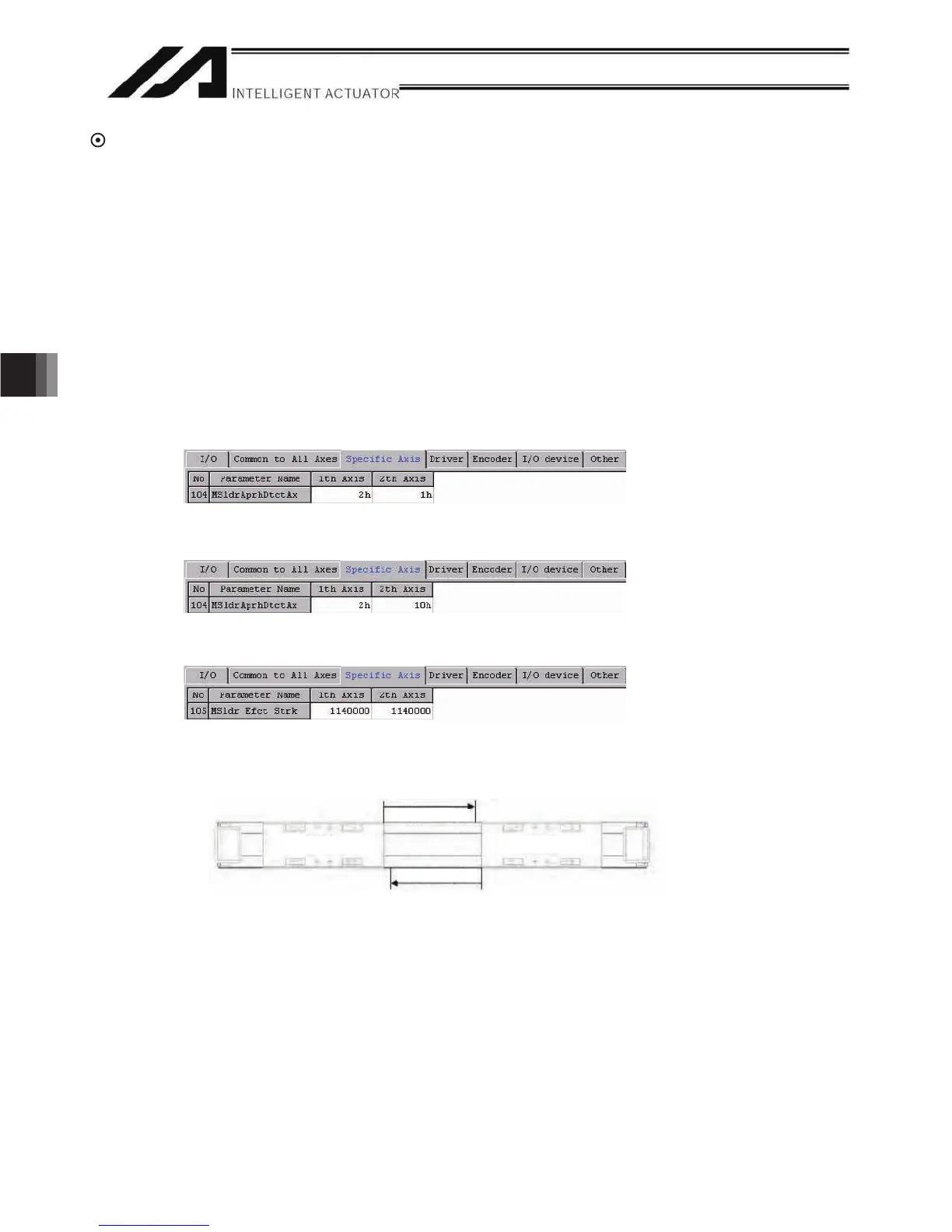404
Appendix
Appendix
Soft limit+ Soft limit-
Soft limit-
Soft limit+
Axis 1
Stroke
Axis 2
Stroke
Multiple-Slider Near-Miss Detection (Collision Prevention) Function
* Applicable versions: XSEL-P/Q/PCT/QCT controllers of main application version 0.51 or later
Teaching pendant main application (IA-T-X, IA-T-XD) version 1.41 or later
Teaching pendant main application (IA-T-X) version 1.31 or later
PC software (IA-101-X-**) version 7.0.1.0 or later
When multiple sliders are used, this function prevents jogging or positioning axes from colliding with one other.
The following parameters are set to detect near-miss situations among multiple sliders.
Setting method
[1] Set the mating axis number for each axis in axis-specific parameter No. 104, “Target axis specification for
multiple-slider near-miss detection.”
Example 1: 2-axis controller
Set the mating axis number for each axis. (The example below assumes that an interlocked
slider exists on the positive side of the coordinate system of the target axis)
Example 2: When an interlocked slider exists on the negative side of the coordinate system of the target
axis (Axis 2 is on the negative side)
[2] Set the effective stroke in axis-specific parameter No. 105, “Effective stroke of multiple sliders.” (The
example below assumes a stroke of 1140.)
(Note 1) The multiple-slider near-miss detection (collision prevention) function is enabled only when coordinates
of two target axes (mating axes) are confirmed. This function is disabled if an encoder error is present
or when home return is not yet completed on an incremental-encoder controller.
After a near-miss situation is detected, the following errors will generate:
Error No. 422, “Multiple-slider command position near-miss error” (Emergency deceleration will be triggered to
stop the sliders, after which the servo will be turned off.)
Error No. 423, “Multiple-slider actual position near-miss error” (Emergency deceleration will be triggered to stop
the sliders, after which the servo will be turned off.)
Following a near-miss detection, pull the sliders out of their near-miss positions via jogging, etc.
(The sliders can be jogged in pull-out directions.)

